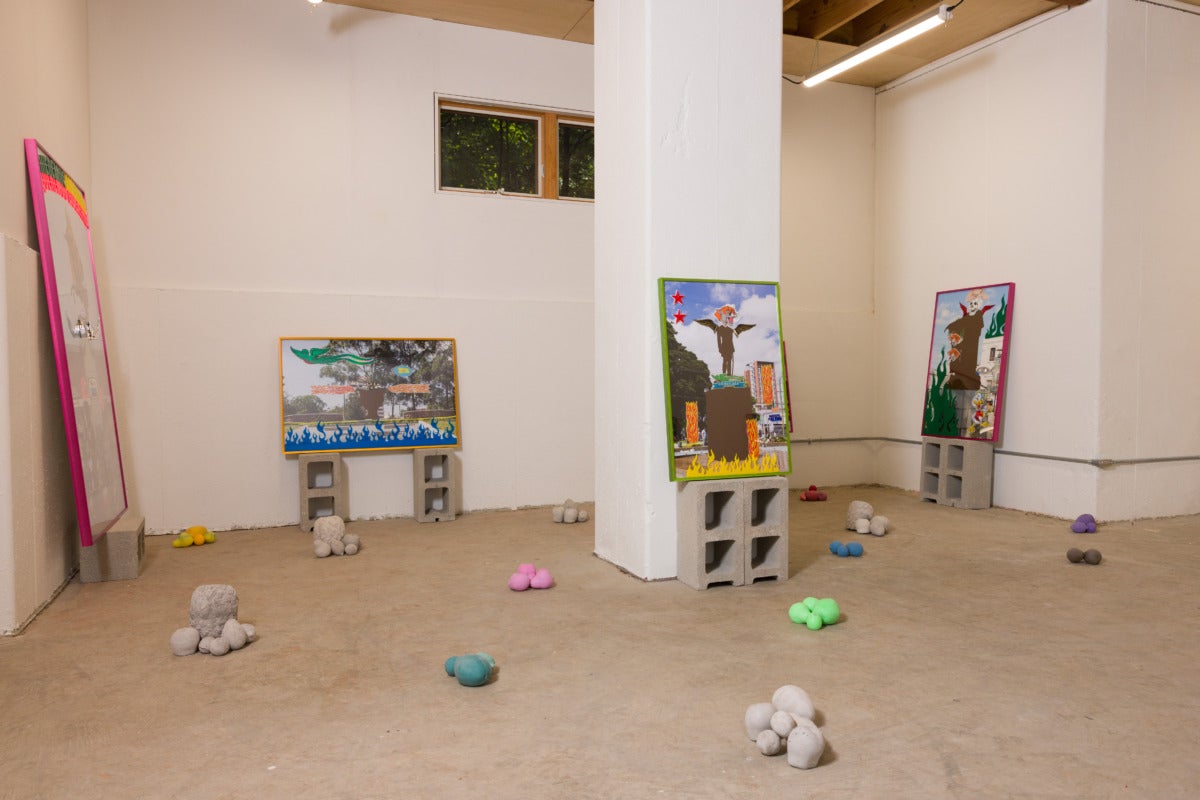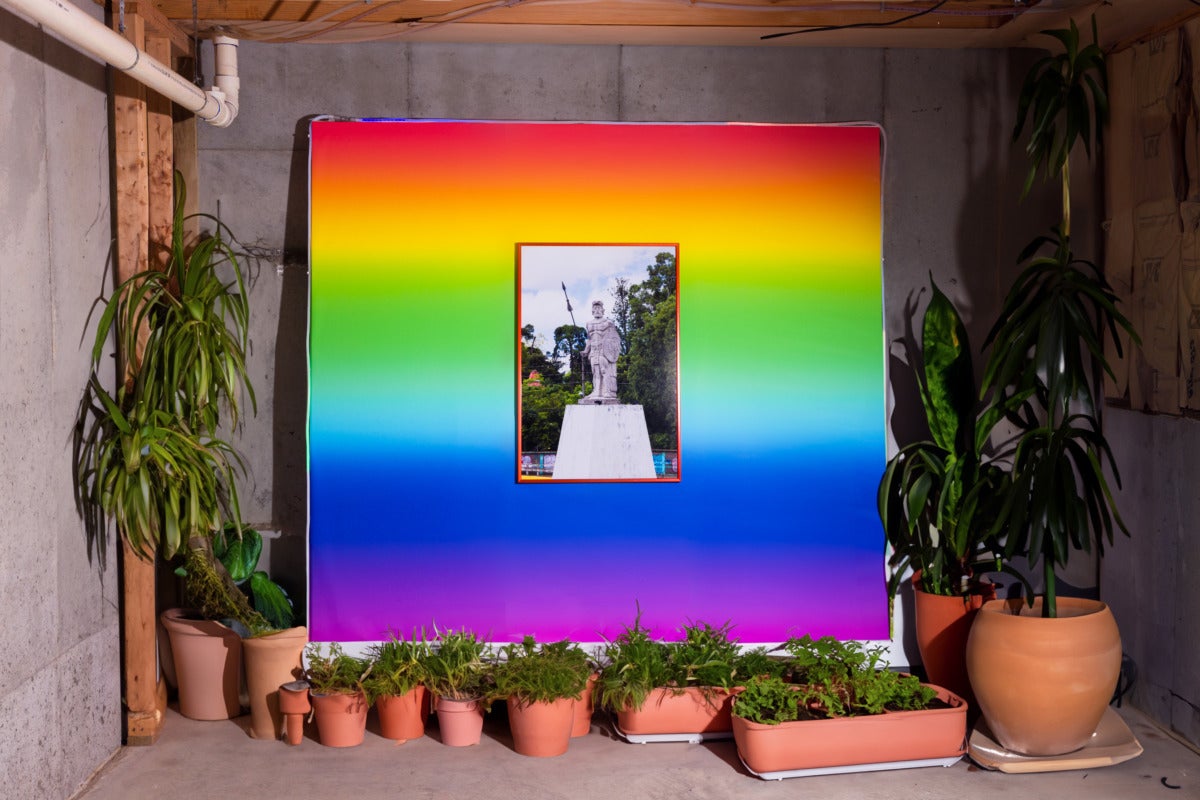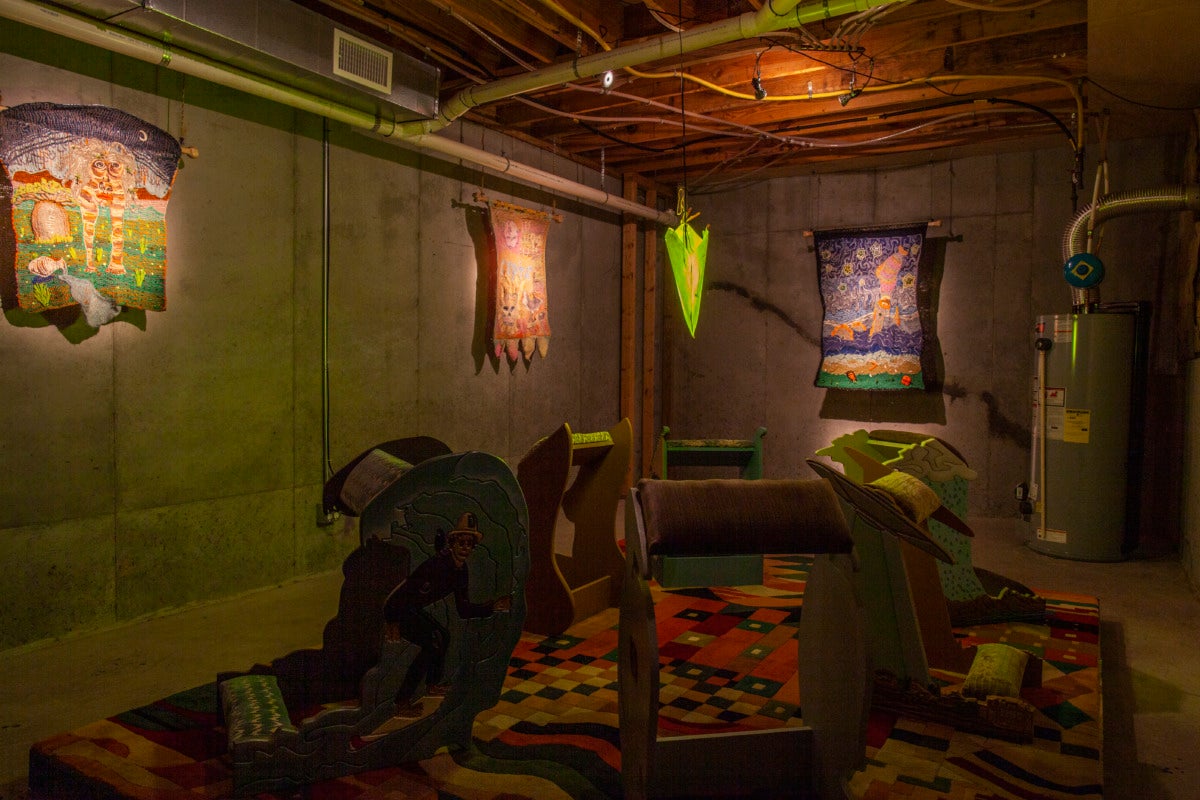
Location/Address: In the basement of private residence, Chapel Hill, NC
Hours: varies
Website: https://www.basementartspace.com/
Founded by: Jonh Blanco, Sarah Elizabeth Cornejo, John DeKemper, Peter Hoffman, Michael Keaveney, Laura Little, Chieko Murasugi, Hồng-Ân Trương
Operated by: Jonh Blanco, Laura Little, Julianne Miao, Chieko Murasugi, Chloé Rager, Hồng-Ân Trương
Opened: 2019
Most Recent Exhibitions: La Eterna Injusticia (Sept. 2023, Martín Wannam), Stink/Stank (Performance Happening, 2022), BASEMENT X PEEL (2022), Limestone Almanac group exhibition (2022, Billy Dee, Ayla Gizlice, Jasper Lee), Loose Footing group exhibition (2021, Felicity Palma, Kate Robinson, Peat Szilagyi)
Isabella Marie Garcia: Tell me a bit more about how and why BASEMENT was founded. Why Chapel Hill?
A: BASEMENT is an artist-run project space that focuses on fostering experimental and critical art practices with strong roots to the regional Southeast. Inspired by an MFA class visit to the 4th Ward Project Space in Chicago, BASEMENT was founded in 2019 by seven newly minted UNC Chapel Hill MFAs and their professor, repurposing the basement of one of their homes. The all-volunteer BASEMENT team does not exhibit their own work but prioritizes supporting other artists from the Southeast, identified through research and studio visits. BASEMENT is interested in building long-term relationships with these artists, beyond their exhibition or residency periods.[1]
Being based in Chapel Hill was an opportunity for artists coming from neighboring cities and areas across the regional South to have a space to show, experience, and learn from the art of other artists, fostering a localized community of support. Because of that, we saw a need in Chapel Hill for more artist-run spaces with an experimental ethos. We are located in a research-dense area, so it is rich with artists and collaborators. The Triangle region (Raleigh, Durham, Chapel Hill) generally speaking is vibrant in the arts and has a diversity of types of art spaces and organizations, but we recognized that there was a growing number of really amazing artists in the region. These are artists who were not leaving after finishing their MFAs at local institutions, or other artists who were moving to the region for other reasons, leaving bigger cities because it’s more affordable here, etc. So we really felt we needed a space to support these artists, and through that, build strong relationships amongst ourselves. It was an instinct to center where we live, and not have to turn to the usual commercial capitals of art to feel like we can see incredible art.
IMG: In researching more about your exhibitions and programming, I stumbled upon the residencies available for both in-person and digital presences to benefit from cross-promoting and collaborating with the space. Can you elaborate more on why these residencies were created, the results from both artists and the space, and what you’re looking for when you open applications?
A: The digital residences were created in response to the COVID-19 pandemic when art spaces were closed to the public and many artists faced financial hardships. As in all our juried programming, we provided modest stipends to the artists.The digital residencies helped us learn more about the vital art being created in the Southeast outside the Research Triangle Region, and to share this work with a wider audience through our social media platforms. We also felt during this time of extreme physical isolation, it was a way to connect with other artists. Our virtual studio visits with digital residents and online closing events helped foster a sense of community with them and our audience that was welcoming and affirming.
The Radicle residency, which started in September 2023, was created to expand the use of our space beyond labor-intensive curated group exhibitions with invited artists. Identifying the need for both studio and exhibition spaces, we mounted a non-juried fundraising exhibition with Chapel Hill’s Peel Gallery to raise funds to support two Radicle residents. The residency provides an artist with one month of studio space in BASEMENT to create work, followed by a month-long solo exhibition. Many excellent artists responded to our open call for this residency, and we made selections based on their experimental approach, formal and conceptual strengths of their practice, engagement with vital contemporary issues, and their commitment to community. We are also committed to opening our space to artists who are underrepresented in traditional art venues. The Radicle residency provides much needed studio and exhibition spaces to local artists.
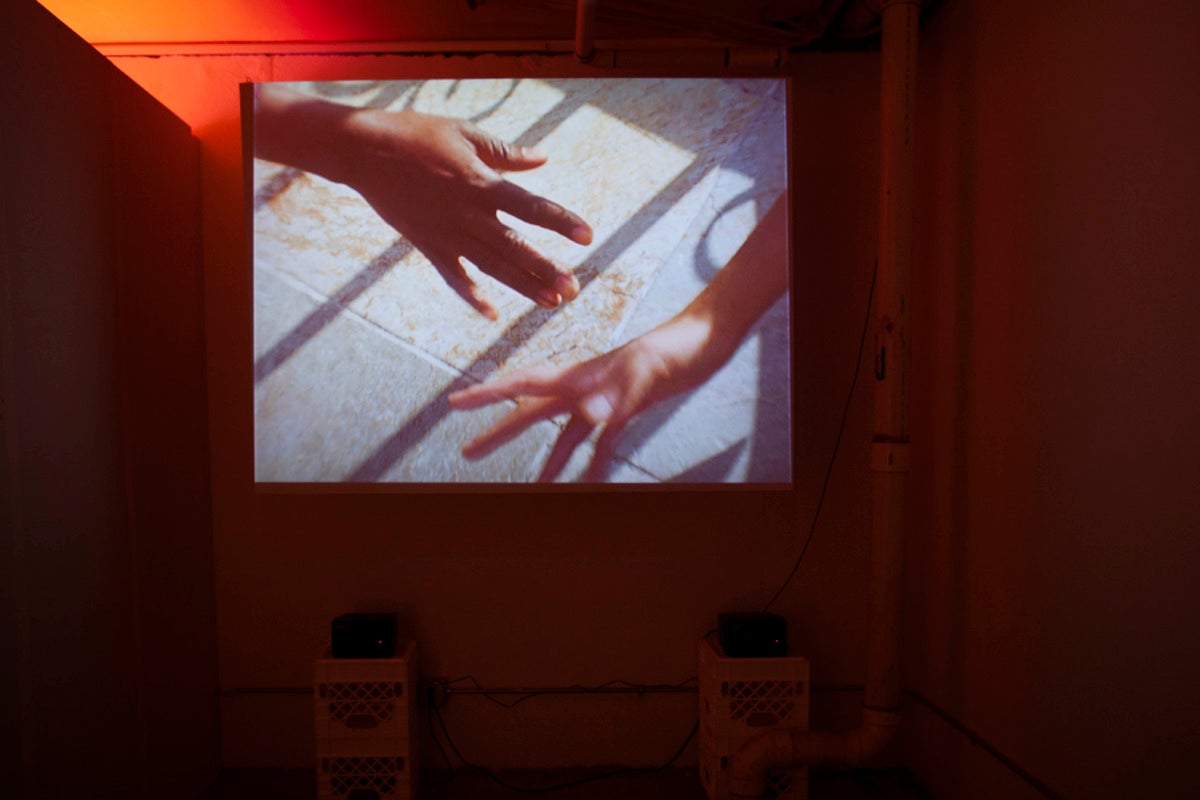
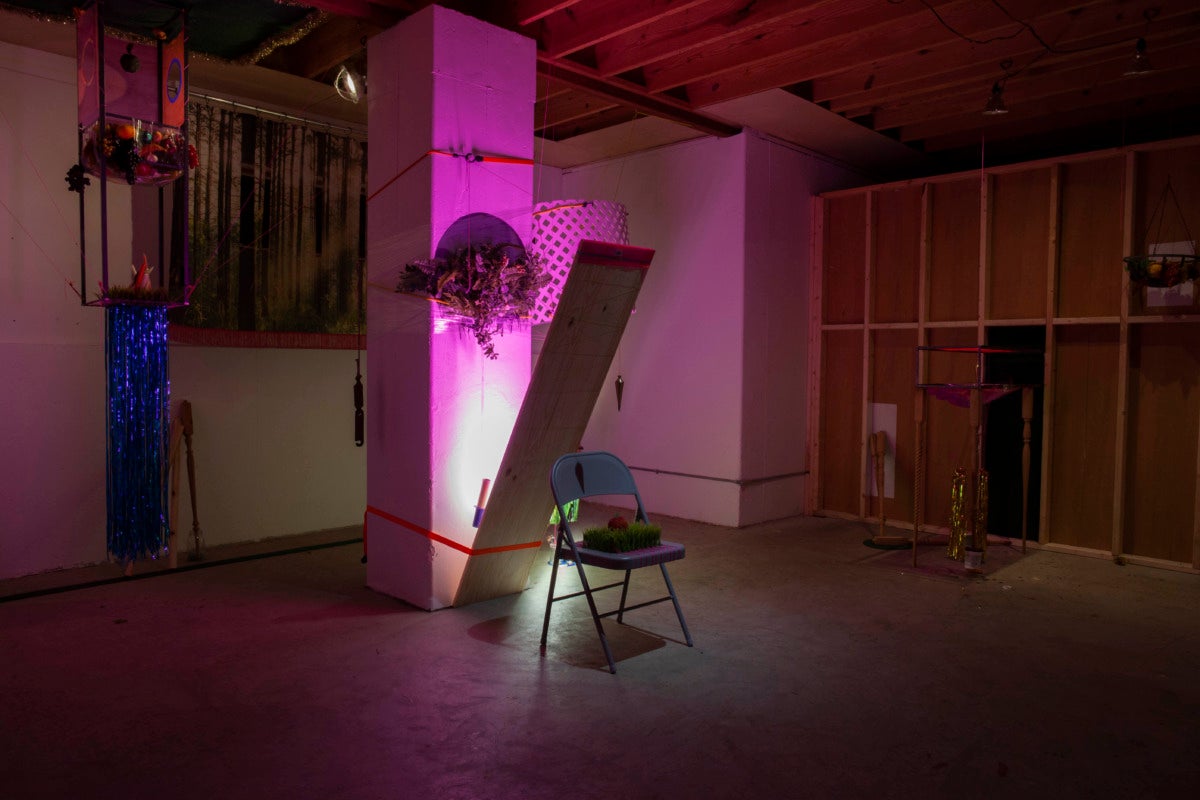
IMG: Who are the artists running BASEMENT and can you tell me more about their practices? What have been the challenges and surprises along the way of running a project space while still nurturing your work? What has been the local community response to the space?
A: Currently we have six BASEMENT team members:
Jonh Blanco is an undisciplined Filipinx-American artist recognized for their critically whimsical and authentic creative work. With an MFA in Studio Art and a background in interdisciplinary studies, they practice art and activism, currently contributing to 21c Museum Hotels and BASEMENT Art Space.
Laura Little is an artist, farmer, and educator living in Rossville, GA and teaches at UT Chattanooga. Little’s trauma-informed practice uses the detritus from the overproduction of consumer capitalism to playfully and earnestly examine our cultural yearning for myth and faith. From working with BASEMENT to tending the soil behind her home, she believes in collaboration and resource sharing, and strives to support regenerative systems.
Julianne Miao is an art historian and curator specializing in issues of gender, race, and commodification in early photography happening in the United States. Miao presently works at the Nasher Museum of Art at Duke University.
Chieko Murasugi is an abstract painter/mixed media artist and former scientist (PhD in Visual Perception) who employs various materials, visual illusions, and computer-generated randomization to explore questions of history, identity, and perception.
Chloé Rager is a sculptor, designer, and educator based in Durham, NC. Their works utilize sculpture, installation, and photography to critically engage with the built environment through projects that consider the often concealed relationships between body, structure, and power. Through their work at BASEMENT and beyond, Rager is committed to skill-sharing and collective visioning.
Hồng-Ân Trương is an artist and activist based in Durham and teaches at UNC Chapel Hill. Her work starts in the archive and uses video, photography, and sound to explore refugee, immigrant, and decolonial narratives and subjectivities. She is also a dedicated collaborator who loves working with other people on projects. In addition to the BASEMENT collaboration, she has collaborated with artist Hương Ngô, scholar and activist denisse andrade, and artists Jina Valentine, Heather Hart, and Lien Truong.
Like many artist-run spaces, a major challenge we face is those of limited resources, both in energy and funding. Between teaching, curating, and managing our own studio practices, we are nonetheless highly committed to BASEMENT’s mission. The BASEMENT team operates on a volunteer model, maintaining the space, researching artists, curating and producing exhibitions with accessible public programming. Our modest funding comes from local grants and fundraising. Some surprises have been the discoveries of unsuspected skills among our team members, and insights important to our individual practices experienced by working at BASEMENT. We all bring our own skills and resources to the table. From start to finish, the programming at BASEMENT is entirely done internally with the tools and talents from our own team.
It has also been a total joy to do this work. Despite occasional stressful moments, we all collaborate and work so well together. Our work is a great excuse to get to spend time together. We are all so busy, so our work with BASEMENT kind of forces us to be together, which we love! Every time we do an event it’s been so fun and we walk away energized with new ideas. There are always new people every time, and so it seems like our community has grown. The response has been overwhelmingly positive from everyone who comes to our space and attends our events; we clearly fulfill a need for artist-run spaces with an experimental, non-commercial vision.
IMG: What’s the future of BASEMENT and what should readers look forward to in the coming months?
A: We want to continue both the Radicle Residency and digital residency programs. In early 2024 we plan to collaborate with another DIY space called Perfect Lovers in Durham to host an experimental performance event and exhibition. Additionally, we will continue with Studio Snacks, our 30-min virtual studio visits with artists who sign up through our website. However, as we have done in the past, BASEMENT will continue to grow and adapt its programming to meet the perceived needs of our art community. Oh, and the BASEMENT team realized that we should throw a party celebrating BASEMENT’s five years of supporting and promoting regional artists!
